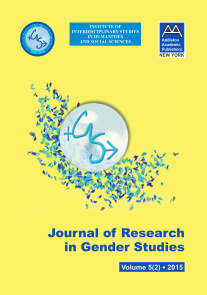GENDER, RACE AND SPACE IN
NELLA LARSEN’S PASSING (1929)
GENDER, RACE AND SPACE IN
NELLA LARSEN’S PASSING (1929)
Author(s): Margaret GillespieSubject(s): Social Sciences
Published by: Addleton Academic Publishers
Keywords: Nella Larsen; Harlem Renaissance; modernism; passing; homosexuality
Summary/Abstract: Awarded a Harmon Foundation Bronze medal in 1928 for her debut novel Quicksand, the first black female creative writer to receive a Guggenheim Fellowship in 1930 on the strength of that novel and her second Passing (1929), Nella Larsen could arguably be credited as being one of the century’s first women writers to push the limits of the societal glass ceiling or “double jeopardy” blocking African-American female professional advancement in the early decades of the twentieth century. Yet like many auspicious modernist women writers of the early twentieth century, Larsen’s literary production would be relegated to the margins of literary history in the half century that followed. Reclaimed from oblivion by second-wave feminist scholars of the seventies and eighties in a move that sought to counter white-male-biased critical hegemony and bring women’s writing out of obscurity and into the canon, the half-Danish, half African-American Larsen is now rightfully recognized as a central figure of the Harlem Renaissance, her work lauded for critically engaging with some of the key concerns of the period and most notably the place of the mixed-race or “mulatto” woman in interwar America. At a time when the boundaries of racial and gender identity were being drawn more sharply than any other period in the nation’s history, in what spaces and places, Larsen asks, may women of mixed race evolve? Larsen’s novel, which takes as its subject matter and narrative process the practice of passing, offers a complex response to this question. Passing charts the fate of two fair-skinned black women both of whom “cross the color line,” taking as the novel puts it “[their] chance in another environment,” their racial origins invisible to the white bourgeois norm whose privileges they covet. Yet while the surface narrative voice and diegetic thrust of the novel seemingly reduce it to a simple moral tale, it will be argued that this ostensible currency of deception and falsehood belies a more sophisticated reflection on the cultural production and performance of identity where ambivalence and hybridity, not only about race but also sexual orientation, are largely at play. pp. 279–289
Journal: Journal of Research in Gender Studies
- Issue Year: 5/2015
- Issue No: 2
- Page Range: 279-289
- Page Count: 11
- Language: English
- Content File-PDF

